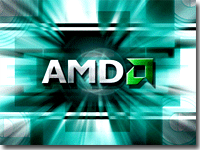AMD Attacking Cloud Gaming with Radeon Sky
Look out Nvidia: AMD has just entered the cloud gaming backbone business.
This week during GDC 2013, AMD revealed Radeon Sky Graphics, a component of AMD's Unified Gaming Strategy spanning consoles, cloud platforms, tablets and PCs. It's a new cloud gaming platform built from the ground up on AMD's Graphics Core Next architecture. It is powered by the company's RapidFire technology, which enables highly efficient and responsive game streaming.
"Real-time gaming through the cloud represents a significant opportunity and AMD is poised to lead in this vertical thanks to our extensive graphics hardware and software capabilities," said David Cummings, senior director, AMD Professional Graphics. "AMD is working closely with CiiNow, G-Cluster, Otoy and Ubitus to deliver exceptional AMD Radeon gaming experiences to the cloud."
AMD's Radeon Sky is offered in three models, two of which are full-height full-length dual-slot cards and one that is a full-height full-length single-slot card. All three support RapidFire technology, PowerTune Technology, and DirectX 11.1 (full according to AMD), and use a PCIe 3.0 x16 bus interface.
The specs show that the Radeon Sky 900 features a core clock speed of 825 MHz and 6 GB of GDDR5 memory (3 GB per GPU). It also has a 384-bit memory interface, a 480 GB/s memory bandwidth, and a TDP of 300 W. This card does not support AMD's ZeroCore Power Technology.
The next card in line, the Radeon Sky 700, has a core clock speed of 900 MHz and 6 GB of GDDR5 memory. It also uses a 384-bit memory interface, but the bandwidth is a smaller 264 GB/s. The TDP is also smaller, requiring 225 W.
The last card on the list, the Radeon Sky 500, is the only single-slot card in the group. It features a core clock speed of 950 MHz and only 4 GB of GDDR5 memory. The memory interface is 256-bit and the bandwidth is 154 GB/s, while the card's TDP is a lower 150 W.
AMD says the secret sauce to its Radeon Sky solutions is in the RapidFire technology. "[It's] a combination of hardware and software that enables cloud gaming partners to benefit from an open API that simplifies the manipulation of key hardware controls to provide HD visual quality, minimal latency and optimal network bandwidth resulting in a compelling and responsive gaming experience from any device over the internet," the company said.
Get Tom's Hardware's best news and in-depth reviews, straight to your inbox.
AMD's Radeon Sky solutions are seemingly in direct response to Nvidia's cloud-based streaming technology, GRID. Nvidia says it's ideal for on-demand gaming as a service (GaaS), and even provides advantages over traditional console gaming systems because titles can be streamed to multiple form factors, not just one locked hardware set.
For more information about AMD's cloud gaming solution, the Radeon Sky Series, head here. As previously stated, current partners include Otoy, G-cluster Global and CiiNow.

Kevin Parrish has over a decade of experience as a writer, editor, and product tester. His work focused on computer hardware, networking equipment, smartphones, tablets, gaming consoles, and other internet-connected devices. His work has appeared in Tom's Hardware, Tom's Guide, Maximum PC, Digital Trends, Android Authority, How-To Geek, Lifewire, and others.
-
spentshells Jaber2 how do you feel about it? That feeling is likely very widespread across the gaming communityReply
-
azraa Built-in recording/streaming solution: yes please.Reply
Cool new software, TressFX, the Birds thingie: yes please!
Cloud gaming. GTFO.
That's just the way it is, i'm sorry. -
A Bad Day jaber2Is there is a big demand for cloud based games? or is this just all for not?Reply
Late 19th century:
"I want a faster horse. Not a damn horseless carriage you numbnut!"
On serious note, the only application I see for cloud gaming are for smartphones and tablets.
The question is, WILL the ISPs be ready for it? Considering the fact that a "true" broadband connection is unheard of in many areas in the US (Dial-up or satellite), and other areas have to put up with $9001 for a connection that MIGHT peak at 100 MB/s. -
blppt I still dont understand how people expect cloud gaming to take over---with even a GREAT internet connection, latencies vs a local computer rendering the game-should be terrible. I often wonder how PS3/Xbox owners play a FPS with a wireless controller and a wireless internet connection at the same time---this trend is taking latency to a whole other level entirely.Reply -
Onus More vapor-based "stuff;" sorry, I'm just not interested. The bandwidth simply isn't there.Reply -
A Bad Day blpptI still dont understand how people expect cloud gaming to take over---with even a GREAT internet connection, latencies vs a local computer rendering the game-should be terrible.Reply
Not if you live in South Korea... -
ojas Note to writer: You do realise that "attacking" suggests aggression towards something?Reply
Not investing in, helping, etc.
Man, the US needs to stop going to war, attacking is somehow percieved as being good for the attacked, now! :P
